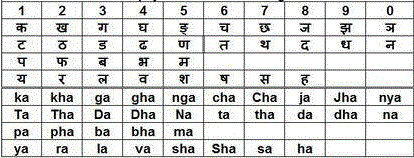"Swami Ramanuja's accomplished life spanned 120 full years" is how my previous article on the phenomenal Jagadacharya had begun. Interestingly, this article is written to prove that the claim regarding His 120-year lifespan is true!
Overview of Famous Sri Vaishnava Texts that Detail Sri Ramanuja's Life Events / History
Some of the most important and famous texts that clearly record Swami Ramanuja's life events are:
1. Sri Yathiraja Vaibhavam by a direct Disciple of Swami Ramanuja named Sri Andhra Purna (also known as Vaduga Nambigal in Thamizh language)
2. Sri Prapannamrutham by Sri Ananthacharya
3. Dhivya Soori Charitham by Sri Garuda Vahana Pandithar
4. 6000 Padi Guru Parampara Prabhavam by Sri Paschaath Sundara Desika (also known as Pinbazhagiya Perumal Jeeyar in Thamizh language)
5. Charamopaya Nirnayam by Sri Sundaravararajacharya (also known as Sri Nayanarachan Pillai in Thamizh language)
About the "6000 Padi Guru Parampara Prabhavam" Text
Post Sri Ramanuja's return to Sri Vaikunta, the Acharyas who continued the lineage are:
1. Sri Govinda (more famous as Embaar)
2. Sri Parashara (more famous as Bhattar)
3. Sri Vedanthi Madhava (more famous as Nanjeeyar)
4. Sri Kalivairi Dasa (more famous as Nampillai)
Now:
* Sri Nampillai lived from 1147 AD to 1252 AD - a direct Disciple of His is Sri Paschaath Sundara Desika, who wrote the "6000 Padi Guru Parampara Prabhavam" text
* This text is written in Thamizh (in a Manipravala style where Sanskrit words can also be seen)
* This text also includes a detailed account of Sri Ramanuja's life history
* This text has provided the year in which Sri Ramanuja had descended to the Bhuloka (i.e. taken birth) and the year of His return to Vaikunta, the abode of Lord Vishnu
* The text provides the years that indicate Sri Ramanuja's lifespan in Katapayathi Sankhya notation
The Katapayathi Sankhya System
The Katapayathi Sankhya Chart - Image & Definition Courtesy: Katapayathi Sankhya System
Katapayathi Sankhya is a system of numerical notation - an ancient Indian system to depict letters to numerals for easy remembrance of numbers as words or verses. Assigning more than one letter to one numeral and nullifying certain other letters as valueless, this system provides the flexibility in forming meaningful words out of numbers which can be easily remembered.

|
Computation of Sri Ramanuja's Lifespan - Decoding the Katapayathi Sankhya Notation in 6000 Padi Guru Parampara Prabhavam
This is what 6000 Padi Guru Parampara Prabhavam text says about the years of Sri Ramanuja's Avathara and Vaikunta Prapathi:
A simple translation of the above-mentioned section (lines relevant to the context):
"Everyone was amazed that the year of His Avathara happened to be धीर्लब्धा (dheerlabdhaa, literally meaning 'Gain of Gnaanaa') and the year of His Vaikunta Prapthi happened to be धर्मोनष्ट: (dharmOnashta:, literally meaning 'Loss of Dharmaa')"
Decoding the Notations धीर्लब्धा and धर्मोनष्ट:
Given below is the guidance provided by 'Sudharshanar' Sri S. Krishnaswamy Iyengar in His famous 3-part book series titled 'சுதர்சனர் 1008 பதில்கள்' (meaning '1008 Answers of Sudharshanar') - Part 3, Question # 880:
English Translation of the Guidance:
Rule: Find the number denoted by the above-mentioned Katapayathi notations and reverse the order of the digits in that number to get what is known as the Saha Calendar year.
Deriving Year of Sri Ramanuja's Avathara
Now, in the word धीर्लब्धा, we have to consider only धी (dhee), ल (la) and धा (dhaa) as, in this particular word, the letters र (ra) and ब (ba) are not present as complete letters in their own right and will have no value. Here again, we should consider only the root letter in each as that is what is represented in the Katapayathi chart i.e. we've to lookup the number corresponding to ध irrespective of whether the lookup is for धी or धा.
So, as per the Katapayathi Sankhya chart, the number associated with:
* ध is 9
* ल is 3
Therefore, धी (dhee), ल (la) and धा (dhaa) will give us 9, 3 and 9 respectively. Hence, 939 is the number and the number will remain the same even if the order of digits is reversed. Thus Saha Calendar Year 939 is Sri Ramanuja's year of Avathara / birth - this corresponds to 1017 AD.
Deriving Year of Sri Ramanuja's Vaikunta Prapthi
Now, in the word धर्मोनष्ट:, we have to consider only ध (dha), म (ma), न (na) and ट (ta) as, in this particular word, the letters र (ra) and ष (SHa) are not present as complete letters in their own right and will have no value. As said earlier, we have to lookup the number corresponding to म even if the letter is मो.
As per the Katapayathi Sankhya chart, the number associated with:
* ध is 9
* म is 5
* न is 0
* ट is 1
Therefore, ध (dha), म (ma), न (na) and ट (ta) will give us 9, 5, 0 and 1 respectively. Hence, 9501 is the number and the number will be 1059 if the order of digits is reversed. Thus Saha Calendar Year 1059 is Sri Ramanuja's year of Vaikunta Prapthi - this corresponds to 1137 AD.
Inference: Sri Ramanuja's lifespan is 120 years i.e. from Saha Year 939 to 1059 (or 1017 AD to 1137 AD).









Great Article, very deatiled. Hats off to you for defending Udavayar. Adiyen
ReplyDeleteThank you, ji. 🙏 🌷 ☺
DeleteVery insightful. குருகடாக்ஷம் பரிபூரணம்.
ReplyDeleteAdiyen Ramanujadasi 🙏
Delete